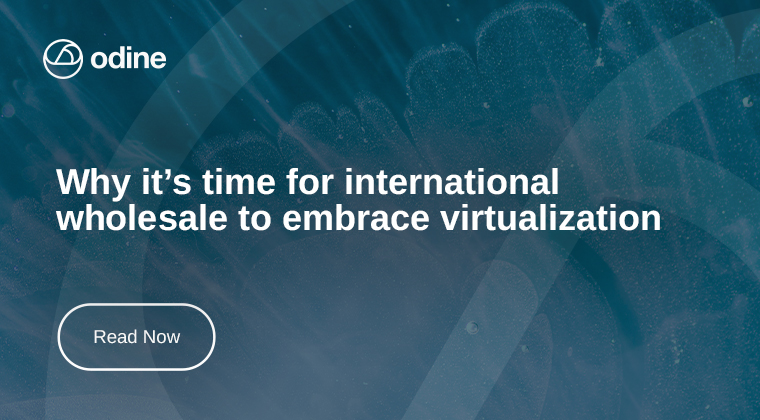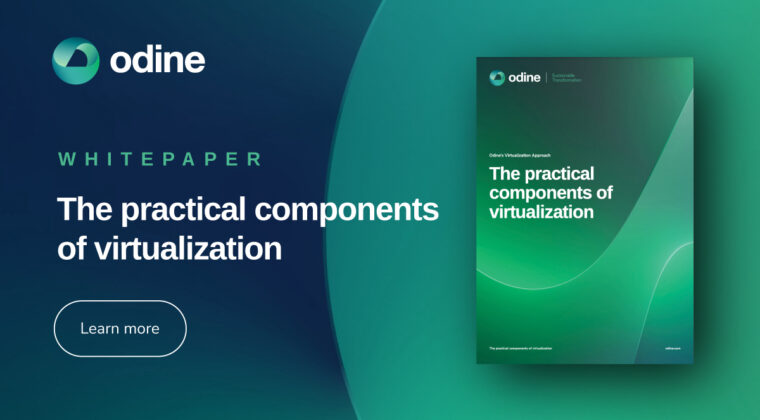The telecoms industry – particularly the wholesale market – has long been under price pressure from eroding margins, new technologies and service evolution.
The international incumbent operators of the world were able to exert control over their markets for many years, but this has changed with the introduction of hyperscalers and new global players. This has caused increased competition among “traditional players as well as non-traditional players, which have shifted value toward technology-focused parts of the value chain (for example, software-defined networking in a wide area network [SD-WAN], software as a service [SaaS], and over the top [OTT])” (McKinsey 2021).
As a result, the historic investments larger operators made into their infrastructure have quickly become unprofitable. Furthermore, these investments, which are made of disparate legacy technologies, developed or acquired over time and therefore not integrated, have become outdated, and require significant resources to operate and maintain.
Now, this pressure has reached into other business areas. Everything from B2B to consumer to core to wholesale, is being affected. Operators need to continually work out how to sustain margins and quality, whilst also being as efficient as possible.
This requires a new network – a complete transformation. As McKinsey states, “operators will have to seriously consider upgrading the network to become a competitive differentiator for both consumer and enterprise customers and to avoid becoming a cost-intensive commodity” – or be doomed to fail. They cannot work with these legacy infrastructures, the speed and cost of which are holding operators back from adapting.
They need to take their thriving competition as an example. Without legacy infrastructure weighing them down, they can go to market rapidly, react to change easily, and build their business model specifically to accommodate modern telecom demands and changes in business practices. Plus, with digital infrastructure as their core, as Arthur D Little states, “they scale far better than traditional international carrier models”.
Operators therefore can’t afford to neglect the potential for new revenue streams. Wholesale and B2B businesses need to streamline, encourage efficiency, and make everything software-defined. This requires an evolution of their current business model from bulk standalone solutions to delivering things ‘as a service’ in a decentralized, virtualized network.
How can legacy Tier 1s make the shift
“A softwarized and cloudified network requires operators to partner closely with hyperscalers, system integrators (SI), and new software-as-a-service (SaaS) vendors.”
Tier 1 operators are simply not equipped with the knowledge or infrastructure to evolve rapidly or at scale. To achieve the transformation they’re aiming for, they need to outsource to organizations who have the expertise to create something secure, connected and resilient.
In particular, those organizations with legacy infrastructure should take advantage of more innovative partners who can deliver new capabilities, such as next-generation solutions and/or a vendor agnostic ecosystem.
These qualities will better position Tier 1s to evolve. Disruptive solutions will help to effectively unify their legacy and virtualized environments, while a best of breed vendor ecosystem will steer them away from their past mistakes, such as deploying suites of disparate solutions over time. In addition, best of breed approaches provide telcos with a model for value-added differentiation in an environment where they are struggling with churn, engagement and personalization.
Finding the right expertise is a challenge
The big challenge is that most companies can’t do it all on their own. They aren’t specialized in, for example, creating virtualized solutions while also achieving seamless integrations with the applications.
For example, software companies can skillfully manage OSS/BSS solutions, but do not have the expertise to consolidate their applications. The result is disconnected solutions. On the other hand, telco giants can manage everything from radio to data centers, but their OPEX is massive which limits their agility.
To achieve true network transformation, rather than small, siloed changes, telcos need to leverage the expertise of systems integrators who can consolidate, build, and virtualize. This ensures their suite of software solutions are not only unified, but cost-effective.
Why leverage systems integration
Using a systems integrator overcomes traditional network issues, making integration, flexibility, quality, and seamless consolidation a priority upfront. With a vendor agnostic approach, systems integrators can build a tailored solution to deliver best of breed convergence within next-generation virtualized networks.
Odine partners with organizations to help them build the best solutions possible. We have the unique expertise and knowledge to build virtualized solutions for the core and for wholesale. Our solutions do not simply deliver software – they deliver efficiency, security, and automation as a service, while transforming your OSS/BSS solutions.
By putting your network into your own virtualized private cloud, you can significantly reduce your vendor count, solution costs, and resources required to manage them. In doing so, telcos can deliver a more secure, optimized, and enhanced service for their customers, while we take care of the rest. This is a highly disruptive option – which a systems integrator can achieve at a fraction of the time and cost than an operator could if attempting this form of transformation independently.
This shift is essential, enabling organizations to act fast, fully monetize their current and future offerings, and match the level of agility that the market and consumers are demanding from them.
















